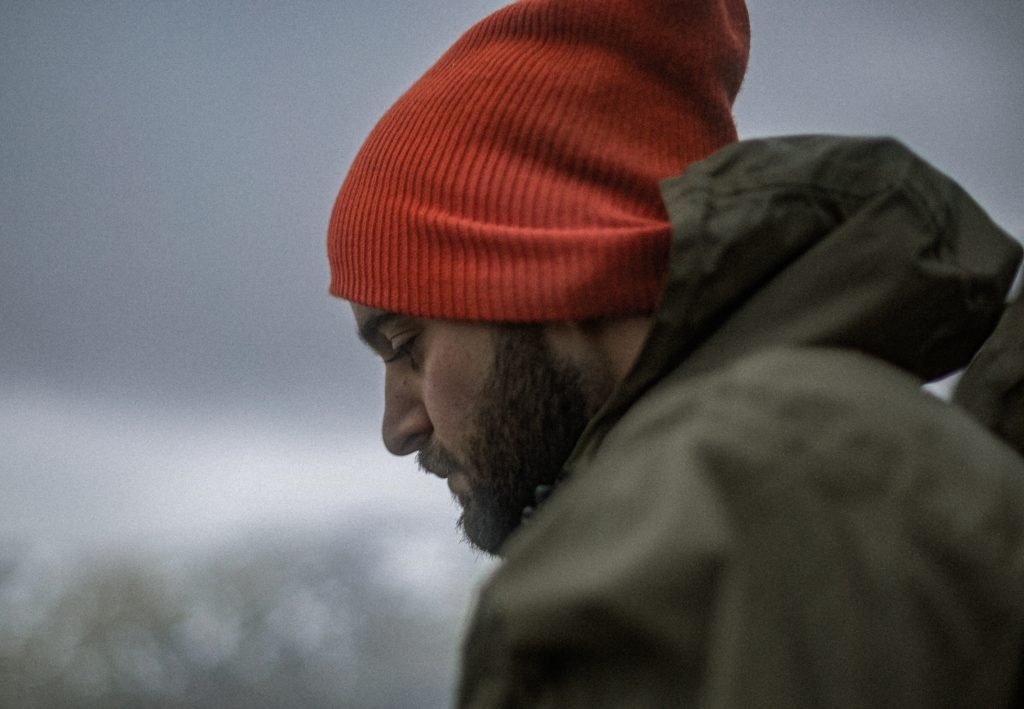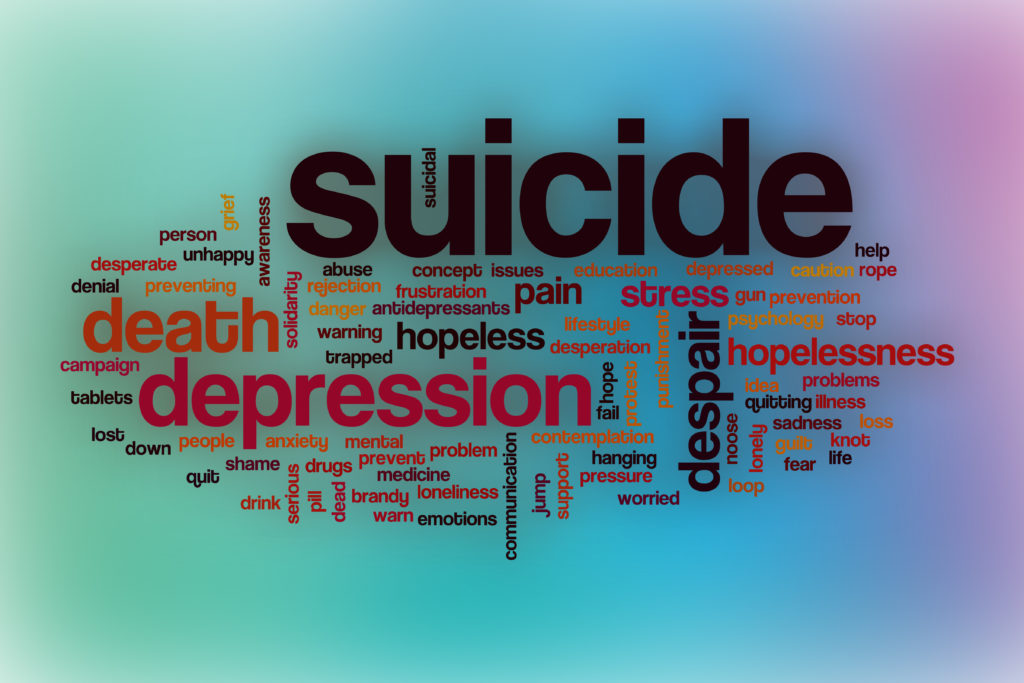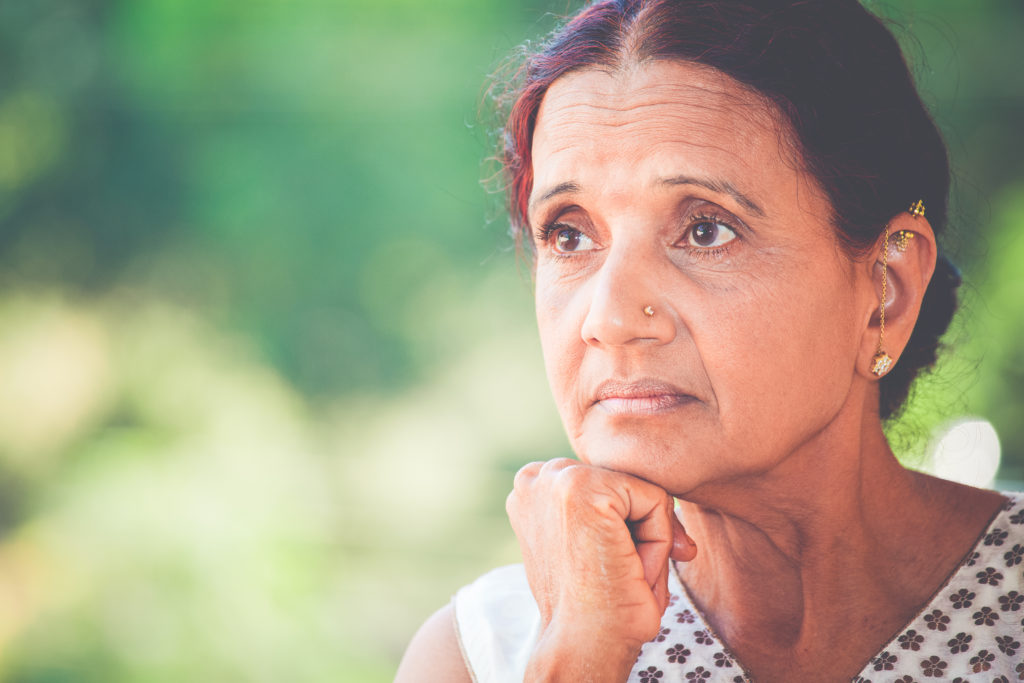There’s nothing more devastating than losing someone you love to the hands of their own in a decision to exit this life. Suicide is a heavy subject for a lot of us, whether we personally know someone who has died this way, struggled with suicidal thoughts ourselves, or witnessed this tragedy first-hand within our very own homes. This Saturday, November 17, 2018, is International Survivors of Suicide Loss Day. As a means to address, express, and heal the grief caused by suicide, this is a time to share and support each other while remembering those we’ve lost.
The suicide of a loved one is an experience that drastically changes the direction of our lives. It’s likely that we didn’t see it coming, or we didn’t even know that the person we thought we were close to had personal struggles with some kind of depression or suicidal thoughts. Maybe we noticed subtle signs beforehand and didn’t quite know what to make of it or what to actually do about it. The truth is, suicide is something that is beyond our outer control.
However, that doesn’t mean there is only one hopeless situation out there that will always end in grief. Although life may never feel the same for survivors of suicide loss, there are plenty of ways to overcome the shocking pain through time. Support systems like the International Survivors of Suicide Loss Day exist all around the world to help one another cope with the grief, memories, and pain that is so familiar to millions of families.
Suicide and Mental Illness
Many suicides have a direct correlation to some form of mental illness. Both professionally treated disorders and fully undiagnosed mental illnesses can lead people to take their own lives each year. Unfortunately, mental illnesses are far less talked about and confronted than they should be.
There’s often a social and relational stigma revolving around mental illness– many people don’t know what it’s like to experience chronic depression, anxiety, a personality disorder, or other common mental health issues. And it’s a common theme that whatever people don’t know, causes some type of fear or discomfort in them. Therefore the silence that persists among mental illness is one that can definitely be improved.
Awareness is such an important part of this issue because the more people are openly aware, the more freedom there is to talk about it, know what to do if someone seems suicidal, and understand the underlying challenges people with mental illnesses might face.

How Many People with a Mental Illness Commit Suicide?
Many individuals with some type of mental disorder find themselves feeling alone, misunderstood, and even isolated from their friends and family. More serious mental health concerns such as psychosis, substance abuse, bipolar disorder, or other extreme personality disorders can lead a healthy, well-meaning person to feel out of control to the point their own thoughts and feelings don’t align with who they truly are.
There is no concrete number of how many people with a mental illness commit suicide. It gets confusing because there is such a high percentage of the population that might have some form of mental health disorder but doesn’t even realize it, much less find adequate help or medical care for it. Surely, there are some of us who might be able to go through life managing mental illness without an issue or any treatment, but that’s beside the point. A lot of mental illnesses can seriously affect the individual as well as their family and friends. In order to go about life as healthy and stable as possible, anyone with a mental illness should have access to the information and support they need to receive help to get them through the rough times.
Do People Without a History of Mental Illness Commit Suicide?
Additionally, the CDC claims that nearly 54% of people who commit suicide had no known or properly diagnosed mental health condition. That means that even though technically “diagnosed” mental illnesses are a major contributor to the rate of suicide in the United States, anyone can wrestle with depressive and suicidal behaviors depending on the circumstances.
Why Don’t People Reach Out for Help?
A lot of suicidal people go through emotional pain and don’t officially reach out for help. Why is this? There are many possible reasons. One main reason might be that he or she is afraid of asking for help. Maybe they feel unworthy of receiving the care and support they need to overcome a deep inner battle they can’t quite express. Other times, a lot of people simply don’t know where to start when it comes to reaching out and finding help to sustain their drive for life.
On the other hand, others do reach out for help and receive the proper treatment they need. There are so many stories of people with thoughts of suicide who ran to the emergency room or called a close friend and are still here today because they spoke up about it before it became too late.
Statistics and the Increase in Suicide Rates
The World Health Organization (WHO) states that nearly one million people die each year due to suicide. It is one of the top three leading causes of death in not only America but the entire world. Some sources claim that by the year 2020, suicide will likely be the number one leading cause of death globally. That’s a pretty staggering estimation, as currently, one person on average per every 40 seconds takes his or her own life through suicide.
Since the 1990s, suicide rates have gone up over 60%. The leading reasons behind suicide have been growing for those at risk of some of the situations including:
- A person with a history of trauma and abuse
- Someone with a family history of mental illness or attempts of suicide
- Substance abuse
- Ownership or access to guns and other weapons
- A chronic mental illness
- Prolonged isolation or a hermit lifestyle
- Extreme personal tragedy or loss
- Extended periods of unbearable stress, anxiety, or pressure

How Drug & Alcohol Addiction Affect Suicide Rates
Mental illness, personal emergency, and extreme loss are not the only major factors that contribute to an increase in suicide rates. The abuse of drugs and alcohol have also shown to increase the risk of suicide in people who have some kind of mental issue.
Dual Diagnosis is when someone has a diagnosed substance abuse issue at the same time as a co-occurring mental health disorder. The excessive consumption of mind-altering substances can negatively affect a person who is prone to suicidal thoughts caused by mental illness. For example, a person with an alcohol use disorder who has been previously diagnosed with depression may experience heightened symptoms of their depression when the drinking gets worse. The same goes for the interaction in reverse: a person with a personality disorder might find their lowest phase of symptoms appear even greater when they begin using illegal drugs.
This is why it’s so crucial for anyone with dual diagnosis to find the right Dual Diagnosis-specific treatment.
International Survivors of Suicide Loss Day
Now that we are more aware of what exactly contributes to the increase in suicide, we need to look at the ways we can help those who have already been affected by a suicide of someone in their personal lives. The reason the International Survivors of Suicide Loss Day was put into place was that Harry Reid, a former Senator, decided there was not adequate enough support for survivors of suicide loss like himself. In 1999, he started this international observance in hopes to come together and share personal stories and empathy in order to open more space for this sensitive subject.
The Internation Survivors of Suicide Loss Day occurs every year on the Saturday before Thanksgiving. The exact date changes every year, but the Saturday before Thanksgiving is a great day to declare for Survivors of suicide loss because dates leading up to the holiday can often be a difficult time of year. We tend to think of the people we love nearing the holidays and a lot of us reflect on the times we’ve shared with the people we’ve lost.
What is the International Survivors of Suicide Loss Day?
This day is the annual worldwide event where communities, families, and solo individuals gather together to remember and honor all the people they’ve lost to suicide. There are physical meeting groups and located events in over 300 cities around the world, including the United States.
There are activities such as story sharing, fundraisers, keynote speakers, workshops, documentary viewings, and influential education booths at each of these meeting points. If there doesn’t happen to be a meeting group or physical site near you, there are still ways to get support from this global event. Since the year 2012, they’ve been holding live online video calls for people who can’t make it to the events in person.

Who are Survivors of Suicide Loss?
Who are the survivors of suicide loss? You probably know several in your social circle. Survivors of suicide loss are exactly that: survivors who have lost someone to suicide. Why do we call people who have lost someone to suicide “survivors”? Because it takes a lot to move on with life after an immediate loved one takes their own life.
Maybe you are one of the survivors of suicide loss. What can you do to take part in this healing process on November 17th? You can simply show up if that’s what you feel comfortable with. There are other ways to feel the impact of this day in remembrance of honoring your loved one. Joining a community where grieving the loss of a close loved one can be extremely helpful in times nearing the holidays. This is especially true because you’re part of a large group of people who can all relate and understand the silent struggle that often follows the suicide of a friend or family member.
How Can I Support Survivors of Suicide Loss?
If you aren’t personally a survivor of suicide loss, but would still like to join in support and solidarity on this issue, you can put your cares and sorry’s to good use. Volunteers are always needed at these events so look up the closest location near you to contact the nearest organizer.
Another thing to be aware of for helping others who are survivors of suicide loss is being mindful of how you communicate with them. There’s not always enough you can say to make them feel happier or to view life in a more positive “hopeful” light. That is something that takes years and is different for survivors of suicide loss to realize in their own time. Don’t feel pressured to try and “fix” the situation by saying things like, “everything happens for a reason” or “it was such a selfish move of your loved one to take his or her own life.” That will likely only make them feel worse. Besides, chances are they don’t want to remember their loved one as a selfish person! They want to remember the good times of joy and love they shared with their family or friend.
Suicide Prevention and Emotional Support

Another way the American Foundation for Suicide Prevention (AFSP) offers help and support to survivors of suicide loss is that they provide resources and care for individuals who are currently at risk of suicide. According to their website, there are steps you can take to help prevent and show care to a loved one you believe might be at risk.
If you see any signs indicating the person in your life might be considering or planning to attempt suicide, take these steps:
- Talk to the person privately and let them know you care
- Listen to their story and what they are feeling right now
- Ask them if they’ve been having suicidal thoughts or behaviors
- DON’T say things to minimize their personal problems, debate the philosophy of life, or try to give immediate advice.
- Stay by their side
- Honor their feelings
- Remove any sharp objects or weapons from the area
- Instead, encourage them to seek professional treatment or see a therapist.
- If all else fails, contact the National Suicide Prevention Hotline (1-800-273-8255) or another Helpline. In an emergency, call 9-1-1
- Go with them to an emergency room if the situation persists or they become mentally or physically unstable.
Finding Help
If you or a loved one specifically has a struggle with substance abuse at this time and you worry it might lead them to future risks of suicide, call our Mental Health and Addiction Helpline. You can talk to one of our professionals who are passionate about finding the right support and medical treatment for you if that’s necessary for your situation.
Are you going to find a way to take part in this year’s International Survivors of Suicide Loss Day? Let us know how it goes in the comments below. If you have any positive experiences, or if you learn anything of value, please share! Continue to spread the awareness of mental health, suicide, and the hope that is possible beyond the pain.
Sources
Befrienders Worldwide – Suicide Statistics
U.S. National Institue of Mental Health (NIMH) – Suicide in America
National Alliance on Mental Health – Risks of Suicide
American Association of Suicidology
